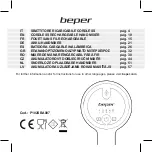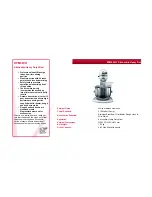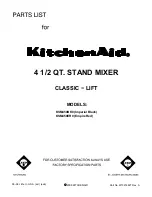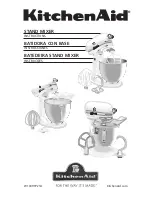
2.1: CONSOLE INTRO
GETTING STARTED > INTRODUCTION TO MIXING CONSOLES
2.1: INTRODUCTION TO CONSOLES
The main function of a mixing console is to combine different audio inputs and independently adjust the levels of
those contributions to the mix. With this very basic functionality you can control and balance any kind of audio from a
one-man-band to an orchestra.
Most mixers however, including the Notepad Series, offer far more than that. A variety of features allow the operator to
shape the mix and use routing options to provide the additional conveniences used in audio mixing applications, such
as external effect sends, stage monitoring outputs, independent headphone monitoring and USB inputs and outputs.
Mix Level
Rotary knobs make it easy to see and adjust relative levels. They allow you to visualise the mix.
Input Choice
A range of different microphones and instruments are catered for with mic, line, and Hi-Z input types and modes, in-
cluding 48V phantom power for powered condenser / capacitor microphones. The gain control allows you to optimise
the input level for the connected source.
Equalisation
Examples include the high pass filter on an input to reduce unwanted low frequencies, or the three-band EQ (Equalis
-
er) used for tonal ‘shaping’ of the source.
Output Options
As well as mixing all the input source channels into one Master Stereo output, you can send particular channels into
additional outputs, or create different auxiliary mixes of all channels to send to an effects processor or a stage mon-
itor, for example. The headphone output allows the operator to listen to the whole Master Mix, or to a selection of
channels via the aux send system.
Internal FX
FX (Effects) processing such as reverb, chorus, and delay are often incorporated into a mixing console so that you
don’t have to invest in ‘outboard’ equipment or use up valuable physical inputs and outputs. The Notepad’s Lexicon
FX processing can be applied in a controlled manner by sending signal from each channel to the internal effects and
returning the processed signal to the mix. The auxiliary send control doubles as the effect send to keep the footprint on
this console small. Notepad 8FX and 12FX have slightly different signal flow to maximise the flexibility of the controls.
Digital inputs and outputs.
Digital I/O is necessary to work with digital audio systems and computer-based Digital Audio Workstations.
The Notepad series uses a USB interface for either 2 or 4 channel input/output with flexible built-in source routing to
provide many recording possibilities. On the Notepad 12FX, the return channels offer additional workstation playback
monitoring possibilities.
More Information
You can find out more about individual Notepad features by reading the relevant section of this manual.
NOTEPAD
5, 8FX, 12FX
User Manual












































